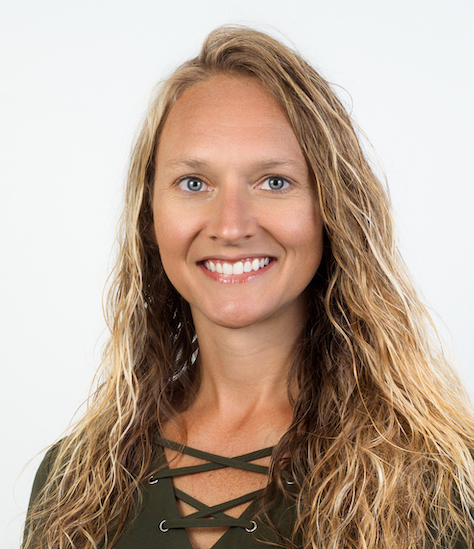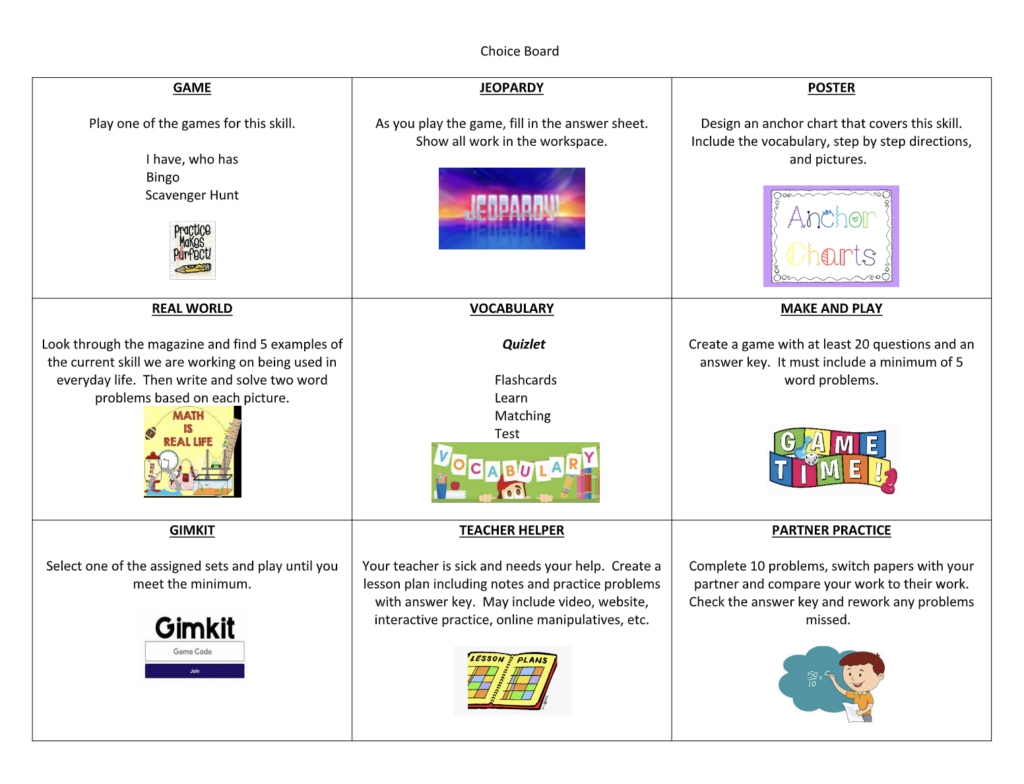
Anna Stewart grew up with great teachers, so she knew early on that teaching was in her future. Her first experience was substitute teaching in college, nearly 20 years ago, and she taught initially in first, third, and fifth grades. Now, she teaches sixth grade math and is the math lead at Yulee Middle School in Nassau County, north of Jacksonville.
Because of her experience and reputation, Anna has been a model teacher for most of her career. Administrators have frequently used her classrooms as examples for others. When she first came across the Solving with Students Cadre opportunity, Anna thought to herself, “Finally, an opportunity for someone to help me and give me feedback for a change!” She signed up and was excited about the opportunity for some meaningful professional development.
At the beginning of the cadre Anna wasn’t sure if she wanted to continue teaching.
“Most of the time when we are offered professional development, someone is standing in front of a group presenting something to us,” said Anna. “This was an opportunity for me to actually experience feedback first hand and get a chance to implement something right in my classroom.”
The additional time and energy focused on her practice and the students in her classroom made all the difference. Anna will be returning to the classroom next year with renewed confidence and excitement.
Solving with Students is Impact Florida’s first Learning Cadre for teachers, and it was designed to bring the Five Conditions that Support Great Teaching directly into the classroom. Specifically, the goal of the cadre is to utilize student feedback to improve student experience in math, a critical pathway for college and career success. Using a free research-based tool called Elevate by PERTS, the innovative program allows teachers to survey their students and then learn about classroom strategies for improvement within six evidence-based learning conditions: affirming identities, classroom community, feedback for growth, meaningful work, student voice, and teacher caring.
Participating teachers gave a total of four student surveys in the spring semester and used the results to improve instruction. They also had the option to receive one-on-one coaching through the New Teacher Center throughout the cadre to discuss their results and brainstorm ways for growth and development. Across the state, 49 teachers completed the Solving with Students Cadre.
Focus on Student Well-being
Anna was very surprised with her initial low scores, and it was an eye-opening realization that while she had always put her heart and soul into her curriculum, her focus on student well-being needed some work.
“What the surveys really showed me was the need to build community within the classroom, with something as simple as helping them forge relationships with each other,” she said. “When we went over the results of the survey, some of the comments were things like ‘I don’t have any friends in this class.’”
Anna began making a point of forging personal connections with every student in her classes, and she encouraged their own relationships with changes like mixing up seating arrangements and group work. She had a five-minute conversation at the beginning of each class to find out if there was anything hindering their learning that day. She even took pictures of them working in groups to show and remind them what appropriate group work looks like.
“Sixth grade is a challenging year. They are going through so many changes in their first year in middle school and parent involvement drops off. They really just need to know someone is there for them,” she said. “I made sure to model, practice, and implement all of these things myself as an example to them. I immediately began to see growth in my students, and they were working well and talking and laughing, explaining things to each other, in a way that they weren’t before. As soon as trust was a part of the classroom and they understood their voice mattered, it made a huge difference.”
Anna also implemented a choice board, a favorite of students, which is also beneficial for keeping students with different levels of mastery engaged. And if her students got their work done early, they earned free time on Friday. They particularly appreciated, she noticed, having options and rewards.
 “The students seemed to work harder when they knew the difference it was making. And they respond so much better to positive feedback rather than punishment,” she said. “It is really not complicated – I just implemented little things to build community and we celebrated those every day.”
“The students seemed to work harder when they knew the difference it was making. And they respond so much better to positive feedback rather than punishment,” she said. “It is really not complicated – I just implemented little things to build community and we celebrated those every day.”
Making Work Meaningful
The students had also indicated on their surveys that they didn’t feel the work was meaningful to their goals. So Anna incorporated a real-life example into her teaching, and had her students create a fictional budget for a future life. They researched a job and its salary, and then looked up how much it would cost for a house, car, and other things they would want to buy as adults. They then created a budget from the results.
“This really surprised them, and more than one student told me, ‘I don’t have anything left after paying for everything,’” Anna recalled. “It was a great lesson in how applicable math will be in their future and how useful it is to real life. I think they began to see math come to life in a way that they hadn’t before.”
Sharing Growth
By the end of the semester, Anna’s survey results had substantially increased in all areas – with her scores in classroom community and student voice rising by more than 30 percentage points each. The anonymity of the surveys helped students feel more comfortable expressing their feelings and opinions, and she noticed a tremendous difference in her classroom atmosphere and student engagement.
Anna has shared these positive factors and more with her principal and math department. She also plans to meet fellow cadre member Candice Mobley and their school administration this summer to share ideas on how to incorporate the student feedback model into more areas.
“There is absolutely no reason not to participate in these surveys, as even low scores provide a tremendous opportunity,” said Anna. “No matter how good you are as a teacher, there is always room for growth. This cadre experience has brought joy and fun back into my classroom.”
